Does Emotional Neglect Cause Autism?

Understanding the Interplay Between Childhood Experiences and Autism
The question 'Does emotional neglect cause autism?' often arises in discussions surrounding neurodevelopmental conditions. To address this, it is crucial to distinguish between causation and correlation, recognizing the biological bases of autism and the impact of childhood experiences such as emotional neglect. This article explores current research, clinical observations, and scientific hypotheses to clarify whether emotional neglect can lead to autism, influence its symptoms, or affect diagnosis and treatment.
The Biological Foundations of Autism Spectrum Disorder
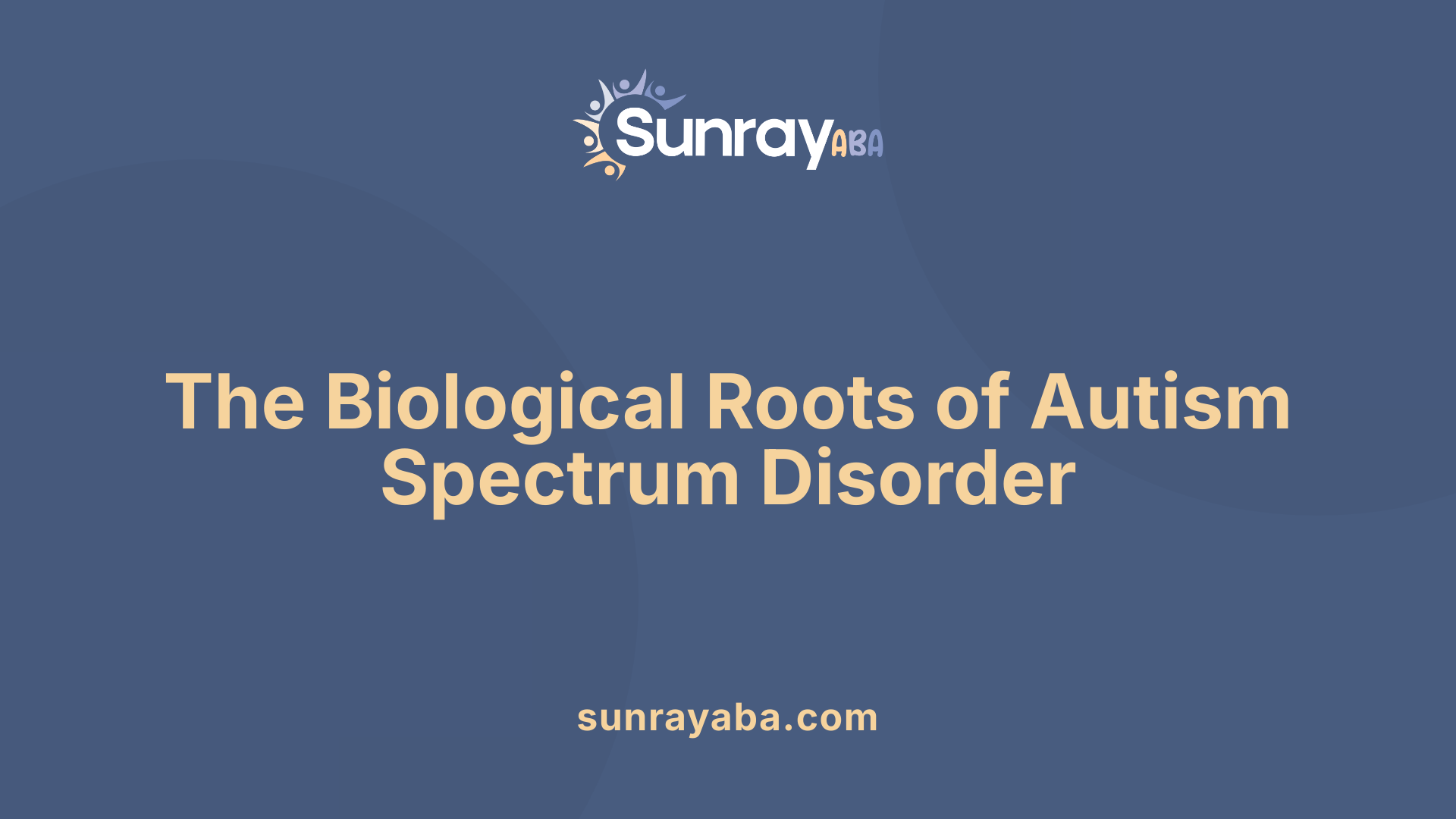
Can emotional neglect cause or contribute to autism spectrum disorder?
Research shows that autism spectrum disorder (ASD) is primarily rooted in genetic and neurodevelopmental factors rather than external experiences such as emotional neglect. ASD is considered a neurodevelopmental condition with biological origins, and while environmental influences can affect how symptoms manifest or progress, they are not seen as direct causes.
However, studies have identified a notable association between maternal exposure to childhood abuse—including emotional neglect—and an increased risk of having a child with ASD. Women who experienced severe abuse during childhood had a risk ratio of 3.7 for their children developing autism. This suggests potential intergenerational effects that might involve biological, behavioral, or genetic mechanisms, rather than emotional neglect acting as a causative agent.
It’s also important to consider that children with ASD are more vulnerable to maltreatment and neglect during childhood. These adverse experiences can then impact brain function and behavior, further complicating developmental outcomes. Still, these experiences are not considered causes of ASD itself.
While adverse childhood experiences, such as neglect, may influence the severity of symptoms or associated behaviors, current evidence does not support the idea that emotional neglect directly causes ASD. Instead, such experiences can exacerbate existing symptoms or contribute to the overall developmental complexity.
In summary, genetic influences remain the central explanation for ASD. External experiences like emotional neglect may affect the developmental trajectory or symptom severity but are not seen as underlying causes of the disorder.
Emotional Neglect and Its Impact on Child Development
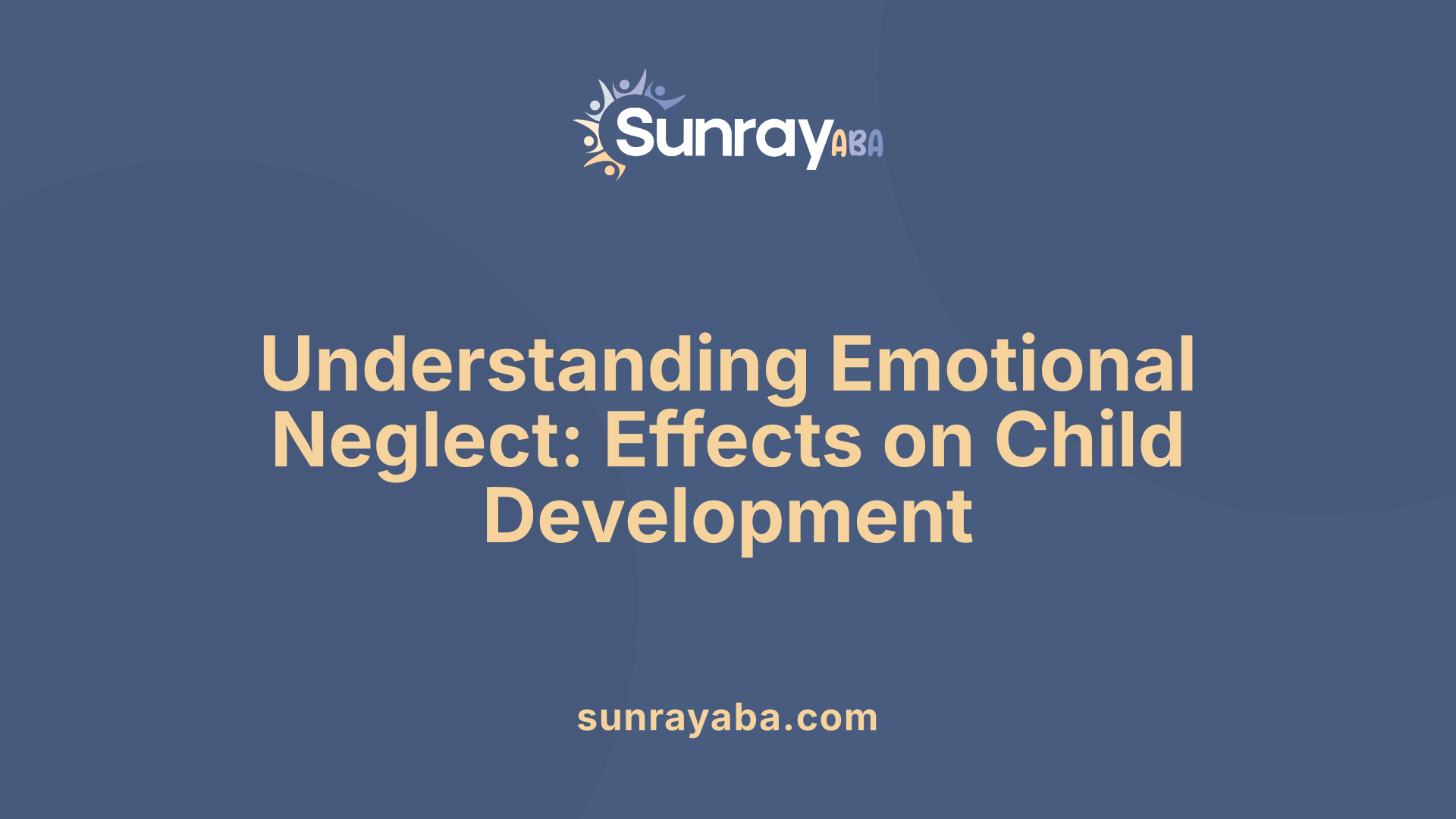
What is the current understanding of the relationship between emotional neglect and autism spectrum disorder?
Emotional neglect refers to a situation where a child's emotional needs are not adequately met by caregivers. It involves the failure to provide necessary emotional nurturing, attention, and support. This form of neglect can have significant effects on a child's emotional and mental health.
When it comes to autism spectrum disorder (ASD), most current research suggests that ASD is primarily a neurodevelopmental condition with strong genetic factors. It is not caused directly by emotional neglect or other forms of maltreatment. However, children with ASD often experience a higher incidence of adverse childhood experiences (ACEs), including emotional neglect, due to their vulnerabilities.
Research indicates that neglect and trauma can worsen mental health issues in children with ASD. For example, emotional neglect and other maltreatment types are linked to increased depression, anxiety, and neurobiological changes that affect stress responses and emotional regulation. These adverse experiences can compound the challenges individuals with ASD face but are not considered root causes of autism itself.
In summary, emotional neglect does not cause autism. Still, it plays a significant role in influencing mental health outcomes and behavioral development in children with ASD. Addressing trauma and providing trauma-informed care are crucial in supporting children with ASD to improve their emotional well-being and resilience.
Additional Insights
Understanding the difference between neglect and abuse is vital for proper intervention. Neglect involves the omission of providing necessary care, such as emotional support, while abuse typically involves active harmful actions like physical violence. Both can negatively impact a child's development, but neglect is often subtler and harder to detect.
Signs of emotional neglect include withdrawal, poor self-esteem, and a lack of typical social or emotional development. Recognizing these signs early can help in seeking appropriate support and preventing long-term harm.
To learn more, searching terms like "emotional neglect effects on child development" and "distinction between neglect and abuse" can provide additional resources on trauma, emotional health, and signs of emotional neglect in children.
Overlap of Symptoms Between Emotional Neglect and Autism
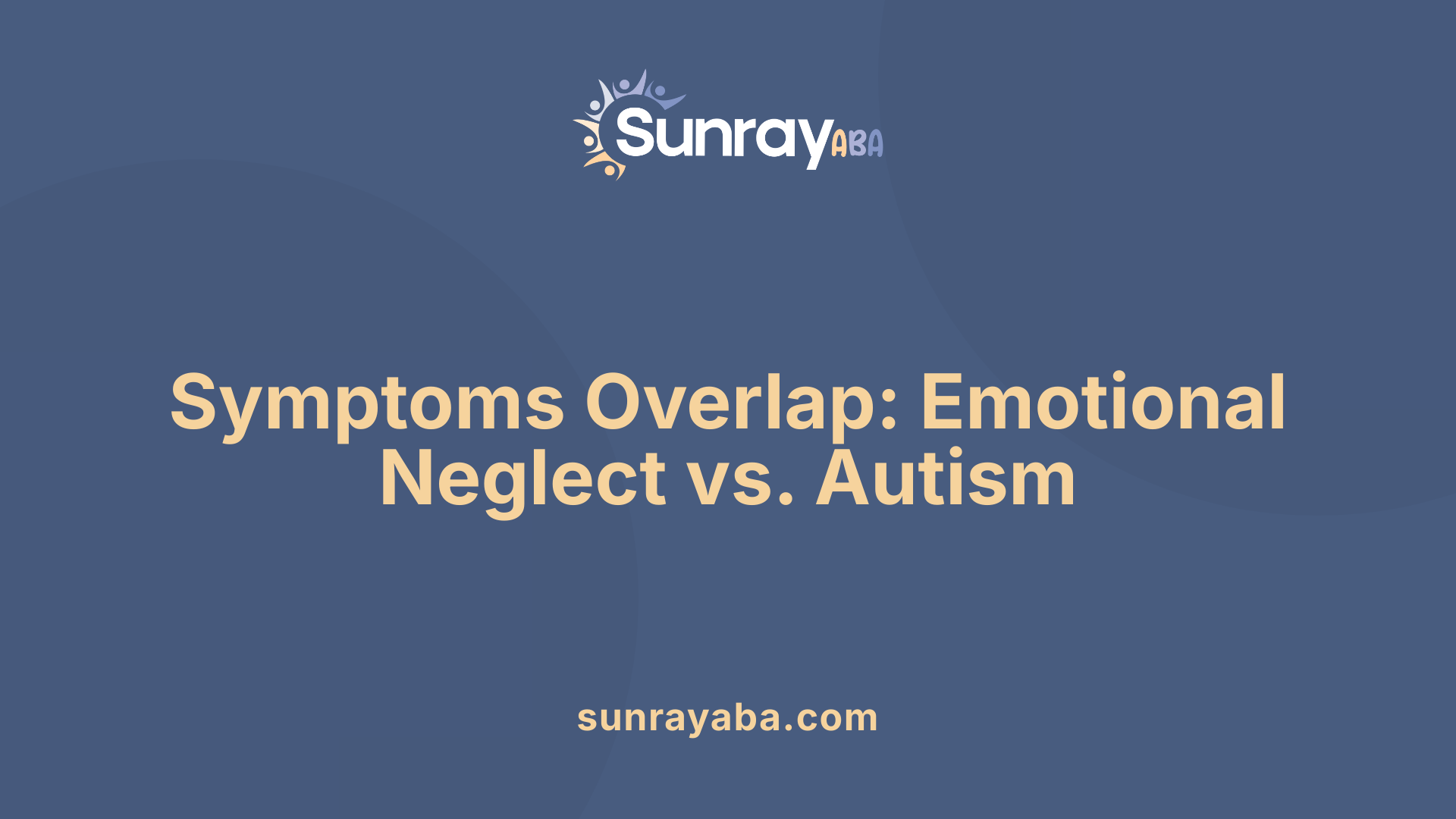
Are the symptoms of emotional neglect similar to or do they mimic autism?
Symptoms of emotional neglect can sometimes overlap with those seen in autism spectrum disorder (ASD), which can pose challenges in diagnosis. Both conditions may exhibit behaviors such as social withdrawal, difficulties in communication, and repetitive actions.
However, the origins of these behaviors differ. Autism is a neurodevelopmental condition present from early childhood, characterized by consistent patterns of social and behavioral traits. In contrast, emotional neglect often results from environmental trauma, where the child’s behaviors are reactive responses to adverse experiences.
In children affected by neglect, behaviors like withdrawal or communication issues may appear more reactive and vary depending on specific triggers or environmental cues. These behaviors might be inconsistent and situational.
Autistic behaviors tend to be stable across various settings and over time, reflecting intrinsic neurodevelopmental differences. Recognizing whether behaviors are persistent or triggered by specific experiences can aid clinicians in distinguishing between autism and trauma-related effects.
Using comprehensive assessments, including clinical interviews, behavioral observations, and history-taking, healthcare providers can better identify the root causes of these behaviors. This careful differentiation ensures that children receive the most appropriate interventions and support tailored to their individual needs.
The Role of Emotional Neglect in the Development of Autism-Like Behaviors
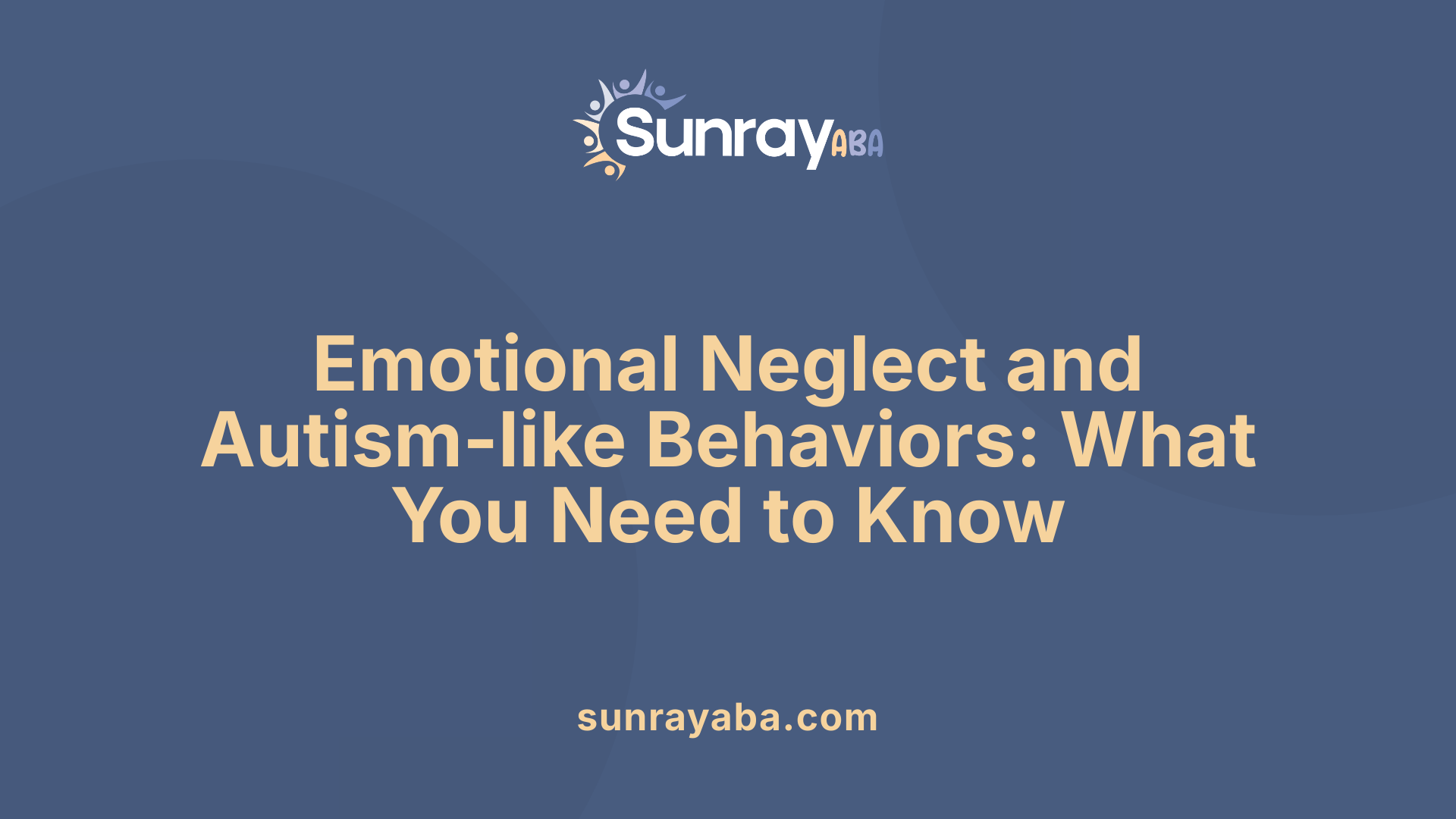
How can emotional neglect influence the development or diagnosis of autism?
Emotional neglect can significantly impact a child's social and emotional growth. Children who experience neglect often exhibit behaviors such as withdrawal, difficulty forming attachments, and problems with communication. These behaviors may resemble some symptoms of autism spectrum disorder (ASD), leading to potential challenges in diagnosis.
However, existing research emphasizes that autism is primarily rooted in neurodevelopmental causes, involving genetic factors and differences in brain development that occur early in life. These biological components establish the foundation for autism long before environmental influences like neglect come into play.
While emotional neglect doesn't cause autism, it can complicate the clinical picture. Children with ASD might display additional emotional or behavioral issues if they experience neglect, making it harder to distinguish between neurodevelopmental traits and environmental effects. Historically, simplistic theories like the "refrigerator mother" hypothesis falsely blamed parenting style for autism, a view now thoroughly debunked.
Current understanding asserts that neglect can exaggerate or mimic some autism features but is not a causative factor. Proper diagnosis depends on comprehensive evaluation to differentiate neurodevelopmental autism from behavioral and emotional effects stemming from adverse childhood experiences. Recognizing the influence of childhood emotional neglect is crucial for appropriate intervention and support, especially in children who display overlapping social difficulties.
Research on Trauma, Abuse, and Autism
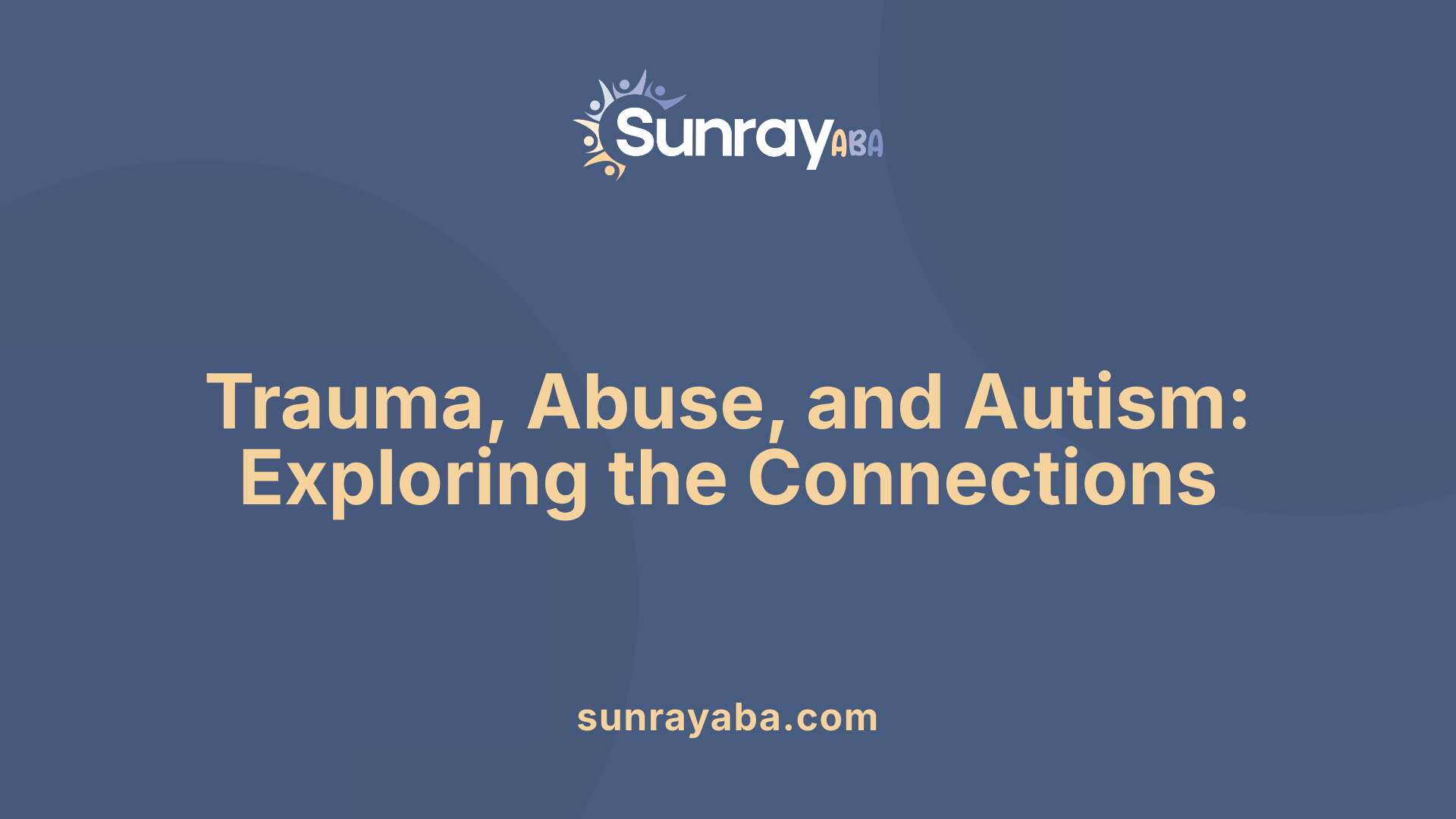
What are the risk factors linking trauma or abuse and autism?
Research shows that maternal exposure to childhood abuse significantly increases the risk of autism spectrum disorder (ASD) in children. The degree of risk correlates with the severity of the mother's past abuse, with women experiencing the highest levels of abuse having a risk ratio of about 3.7 for having a child with autism.
How do adverse childhood experiences (ACEs) influence autistic development?
Children with autism, especially those with level 3 autism who may be nonverbal or cognitively more impaired, are more vulnerable to abuse and neglect. Signs of abuse include physical marks such as specific bruises or scratches, often on areas they cannot reach, and behavioral signs such as sudden regression or avoidance of activities. Neglect may manifest through poor hygiene or skin issues, although these symptoms can overlap with autism-related sensory sensitivities.
What is the impact of trauma and abuse on autistic individuals?
While adverse perinatal factors associated with maternal childhood abuse account for a small portion of autism risk, trauma remains an important concern. Autistic individuals are more susceptible to experiences of emotional neglect, social exclusion, and bullying, which can lead to increased mental health issues like depression. Childhood neglect, a form of trauma, has been strongly linked to depression, especially in those with schizotypal personality traits.
Does trauma contribute to mental health challenges in autistic people?
Trauma, including emotional neglect, can exacerbate mental health problems such as depression and anxiety in autistic individuals. Neglect has been shown to mediate the relationship between schizotypal traits and depression but does not fully explain the link between autistic personality traits and depression.
What are practices for recognizing and addressing trauma?
Caregivers and practitioners should remain vigilant for signs of abuse or neglect. Physical signs include specific bruising patterns or injuries, while behavioral signals include sudden changes in routine, increased challenging behaviors, or withdrawal. Proactive steps include teaching children how to express discomfort, conducting daily body scans to monitor physical health, and seeking appropriate treatment to manage challenging behaviors.
Understanding the complex relationship between trauma and autism highlights the importance of trauma-informed care and early intervention to support autistic individuals' mental health.
| Aspect | Details | Additional Information |
|---|---|---|
| Risk factors | Maternal childhood abuse increases ASD risk | Risk ratio up to 3.7 |
| Types of adverse experiences | Emotional neglect, physical neglect, social exclusion | Common among children with autism |
| Signs of abuse | Bruising, scratches, behavioral changes | Focus on physical and behavioral indicators |
| Mental health impact | Depression, anxiety, behavioral regression | Trauma can worsen symptoms |
| Prevention & intervention | Body scans, safety education, treatment | Emphasizes early detection and support |
Effects of Self-Neglect and Its Distinction from Abuse
What is self-neglect, and how does it differ from abuse?
Self-neglect refers to a行为中人自己忽视自己的基本需求,导致可能严重影响其身体、心理和情感健康的情况。与他人实施的虐待不同,self-neglect 不涉及他人的直接控制或伤害,而是个人的行为或忽视。
自我忽视可以在短时间内带来严重的健康问题,包括身体伤害和精神健康恶化。这种行为可能源于多种原因,例如精神健康问题、童年时期的忽视或创伤、文化观念、身体健康挑战以及重大生活事件。
为什么识别自我忽视很重要?
识别此行为的迹象对于及时提供支持和干预至关重要。常见的迹象包括个人卫生差、居住环境不洁、拒绝寻求帮助、采取危险行为及表现出精神状态的明显减退。
自我忽视的原因和表现
引起自我忽视的因素多样,包括精神疾病、创伤经历、文化和社会观点以及疾病或生活变故引发的应对机制。表现形式诸如极端不整洁、严重的身体状况甚至自我伤害。
识别自我忽视与区分虐待
了解自我忽视与外部虐待的不同点对于制定合适的干预措施非常重要。虐待通常涉及其他人的主动伤害或控制,而自我忽视主要体现为个人对自身需求的忽略或无法满足。
采取行动方面,照顾者和专业人士应注意观察个人的生活习惯、身体状况变化,并在必要时提供帮助和资源。此外,教育个人学会表达不适的方式和通过日常健康检测来监测身体状况也很有益,以减少潜在危害。
Vulnerabilities of Children with Severe Autism to Maltreatment
What risks do children with autism face?
Children with severe autism, especially those who are nonverbal or have significant intellectual disabilities, are more vulnerable to abuse and neglect. Their difficulties in communication and social interaction can make it harder for them to report abuse or seek help. Moreover, their need for routine and specific care routines might increase the chances of mistreatment if caregivers are overwhelmed or neglectful.
Recent research shows that children with autism are at an increased risk of experiencing maltreatment, especially when their symptoms are more severe. These children may be more prone to physical harm, emotional neglect, or exploitation due to their vulnerabilities.
What are physical signs of abuse and neglect?
Caregivers and observers should be vigilant for signs of physical abuse, such as bruising resembling fingerprints, scratches, or bruises in areas unlikely to be reachable by the child. These marks might be located on the head or torso and could have specific shapes.
Signs of neglect can include poor hygiene or rashes resulting from infrequent diaper changes. However, some of these signs can also be attributed to sensory sensitivities common among autistic children, which may complicate diagnosis.
Changes in behavior—like regression of skills, increased challenging behaviors, or sudden avoidance of activities such as school—may also indicate underlying abuse or neglect.
How should caregivers and professionals approach safeguarding?
When abuse or neglect is suspected, it is crucial for caregivers to investigate carefully. This includes inquiring about safety procedures, directly observing physical signs, and reviewing any available footage. Proactive safety measures are essential.
Teaching children ways to express discomfort, conducting daily body scans to detect signs of harm, and seeking appropriate treatment can help reduce their chances of being victimized. Close monitoring and responsive care are especially important for children with more severe symptoms.
Special considerations for caregiving
Understanding the unique vulnerabilities of children with autism is vital. Caregivers should educate themselves about potential signs of abuse and neglect specific to autism. Employing strategies like routine safety checks, encouraging open communication, and maintaining a vigilant environment can significantly help protect these children.
In summary, children with severe autism require attentive care and protective measures tailored to their specific needs. Recognizing early signs of maltreatment and taking swift action can make a crucial difference in ensuring their safety and well-being.
Practical Measures for Protecting Autistic Children from Maltreatment
Observation Strategies
Monitoring children closely is essential, especially for those with severe autism who may have difficulty communicating. Look for physical signs like bruises that resemble fingerprints, scratches, or bruises in hard-to-see areas like the head or torso.
Be alert to behavioral changes such as sudden withdrawal, regression in skills, or an increase in challenging behaviors. Changes in routine or avoidance of activities like school may also signal potential issues.
Regular body scans and careful observation help document physical signs and emotional well-being, aiding early detection of maltreatment.
Preventative Interventions
Implementing proactive teaching helps children express discomfort safely. Teaching children how to communicate their feelings reduces the risk of situations escalating unnoticed.
Maintaining consistent routines and providing a stable environment reduce anxiety and confusion, which could otherwise increase vulnerability.
Providing support for mental health issues, addressing sensory sensitivities, and seeking treatment for challenging behaviors can also lower the risk of abuse or neglect.
Encouraging caregivers to maintain hygiene, establish safety routines, and be vigilant about signs of neglect is equally important.
How to Investigate Suspected Abuse
If abuse or neglect is suspected, caregivers should be proactive. They can inquire about safety procedures at home or school and observe for physical or behavioral signs.
Reviewing footage from security cameras or recordings can provide objective evidence.
It is crucial to approach the situation with sensitivity, ensuring that the child feels safe and supported during investigations.
Professional assessment by child protection services may be necessary if suspicion persists.
By taking these steps, caregivers can better safeguard vulnerable children from maltreatment while respecting their physical and emotional needs.
Recognizing Complex Interactions and Ensuring Support
While current evidence indicates that emotional neglect is not a direct cause of autism, its impact on individuals with ASD can be profound, affecting mental health, behavior, and overall development. The neurobiological roots of autism lie primarily in genetics and early brain development, but adverse childhood experiences, including neglect, can compound challenges faced by autistic individuals. Recognizing overlapping symptoms and differentiating between ASD-related behaviors and trauma responses is essential for accurate diagnosis and effective intervention. Protecting vulnerable children, especially those with severe autism, requires vigilance, appropriate screening, and trauma-informed care. Addressing emotional neglect in support strategies can improve the quality of life for autistic individuals and their families, emphasizing a holistic approach that considers biological, psychological, and environmental factors.
References
- Maternal exposure to childhood abuse is associated with elevated ...
- The mediating effects of childhood neglect on the association ...
- Autism and self-neglect - Leicestershire Partnership NHS Trust
- Recognizing signs of abuse in profound autism
- Maternal exposure to childhood abuse is associated with elevated ...
- Associations of childhood experiences with event-related potentials ...
- Autism Spotlight | Learn Science at Scitable - Nature